I’m adding a new stitch pattern to my collection of Tunisian crochet stitches on this website: the Tunisian rib stitch. It has many different names in English. What matters to remember is that this is a combination of 2 stitches: the Tunisian simple stitch and the twisted up stitch.
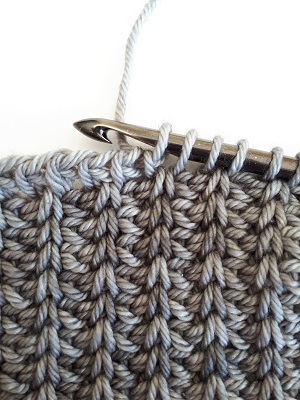
I added a video in French at the end of this article. I show how to make this rib stitch with a single-ended hook in one color. And how to make it with a double-ended hook in 2 different colors. Read this article to find out more about key elements.
Tunisian simple stitch and twisted UP stitch
The Tunisian rib stitch is a combination of 2 stitches, the simple stitch and the twisted UP stitch. So it is important to cast on an even number of stitches. Or to have a row made of an even number of stitches. Keep in mind that you should add 2 stitches for the edges (one at the beginning and one at the end of the FwdP).
I want to insist on the importance of making the twisted stitch “the right way”. I make a distinction in English between the twisted UP and the twisted DOWN stitch. The way you twist the front vertical bar, upward or downward, has a crucial impact on how the stitch looks like. Previously I shared a video in French to show the difference between twisting a stitch up or down. Keep that “twist” difference in mind when you want to make the Tunisian rib stitch.
Tunisian rib stitch with 2 different colors
The Tunisian rib stitch looks great in one color. You can make it with a single-ended hook or in the round with a double-ended hook.
To make it with 2 contrasting colors, keep this rule in mind: you always use one color on the FwdP and another color on the RetP. The rib lines (in yellow on the photo below) are made on the FwdP, when you pick up loops. The background (in purple) is made on the RetP, when you close loops (yarn over, pull through 2).
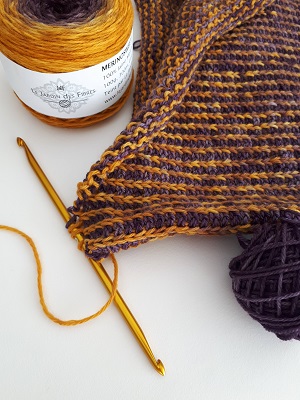
With a single-ended hook, it is complicated to make this rib stitch in 2 colors.
Either you cut yarn at the end of each pass. That means at the end of each FwdP AND each RetP. Argh…
Or you carry the unused yarn along the back of your work when you are busy on a pass with the other yarn. As in the Fair Isles technique, but without switching yarn in the middle of passes, only at the start and end of each pass.
With a double-ended hook, used to work in the round, it is much easier to use 2 different colors. You simply make the stitch pattern (Tunisian simple stitch and twisted up stitch) on the FwdP in one color. Then you turn your work and start the RetP with a different color. You can try different combinations of colors and even use color-changing yarn.
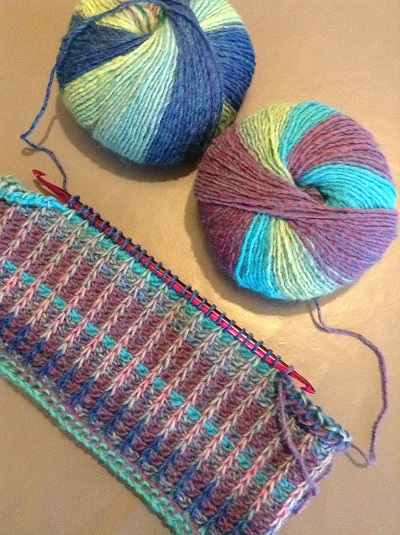
This stitch used in my patterns
I use this stitch combination in several of my patterns, available on Ravelry.
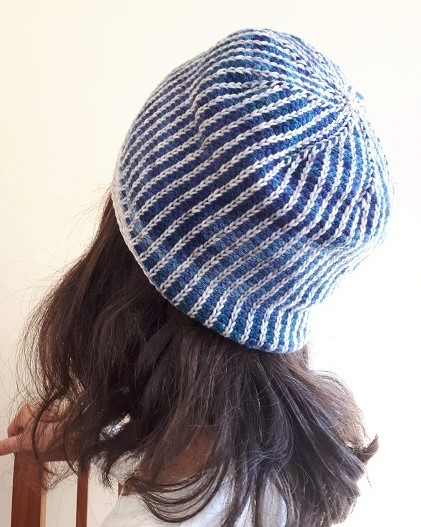
If you like what I do, support my work and buy my patterns!

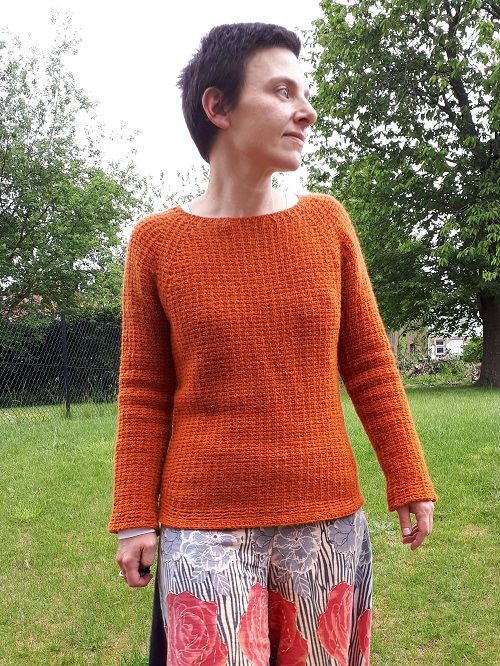
May I ask what brand your double ended tunisian hooks are and where you purchased them? Thank you!
Hi, the golden double-ended hook is made by Catch Hooks in Australia. You can see more of these hooks and contact the maker on Instagram : https://www.instagram.com/catch_hooks/
Merci Rachel!
Can I ask do you have any patterns for tunisian crochet cardigans & the best yarns to use, I live in the UK thank you for thanking the time to read this comment.
Hello, Anita,
All my patterns can be found on my website: https://rachelhenri.com/en/my-tunisian-crochet-patterns/
You’ll find them as well on Ravelry.
About the best yarns, that’s a tricky question. My preference goes to thinner yarns, fingering or sock yarn. Keep in mind that Tunisian crochet is close to weaving, so you’ll have chains locked in loops. If you select a thick yarn, your fabric will be very thick.